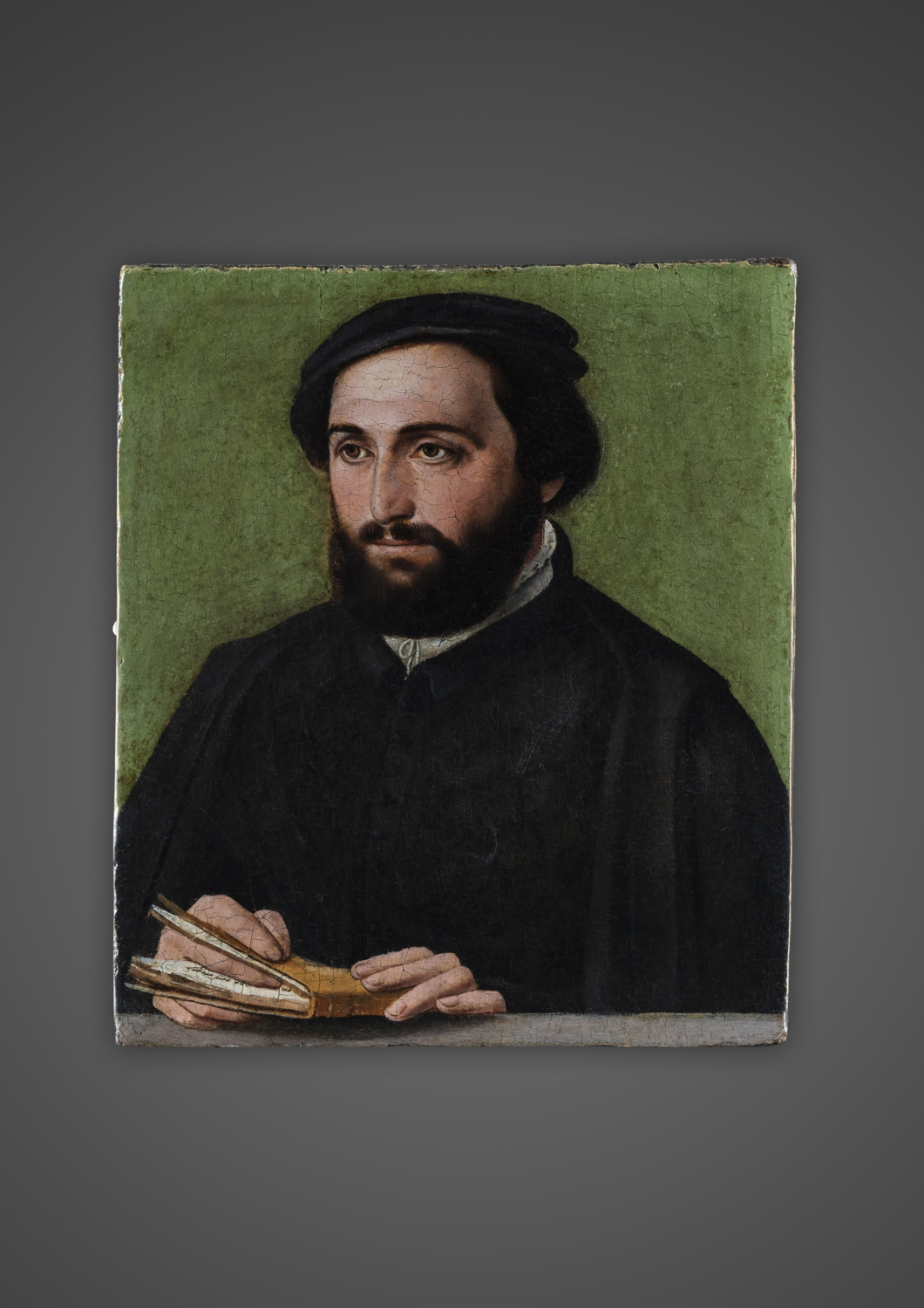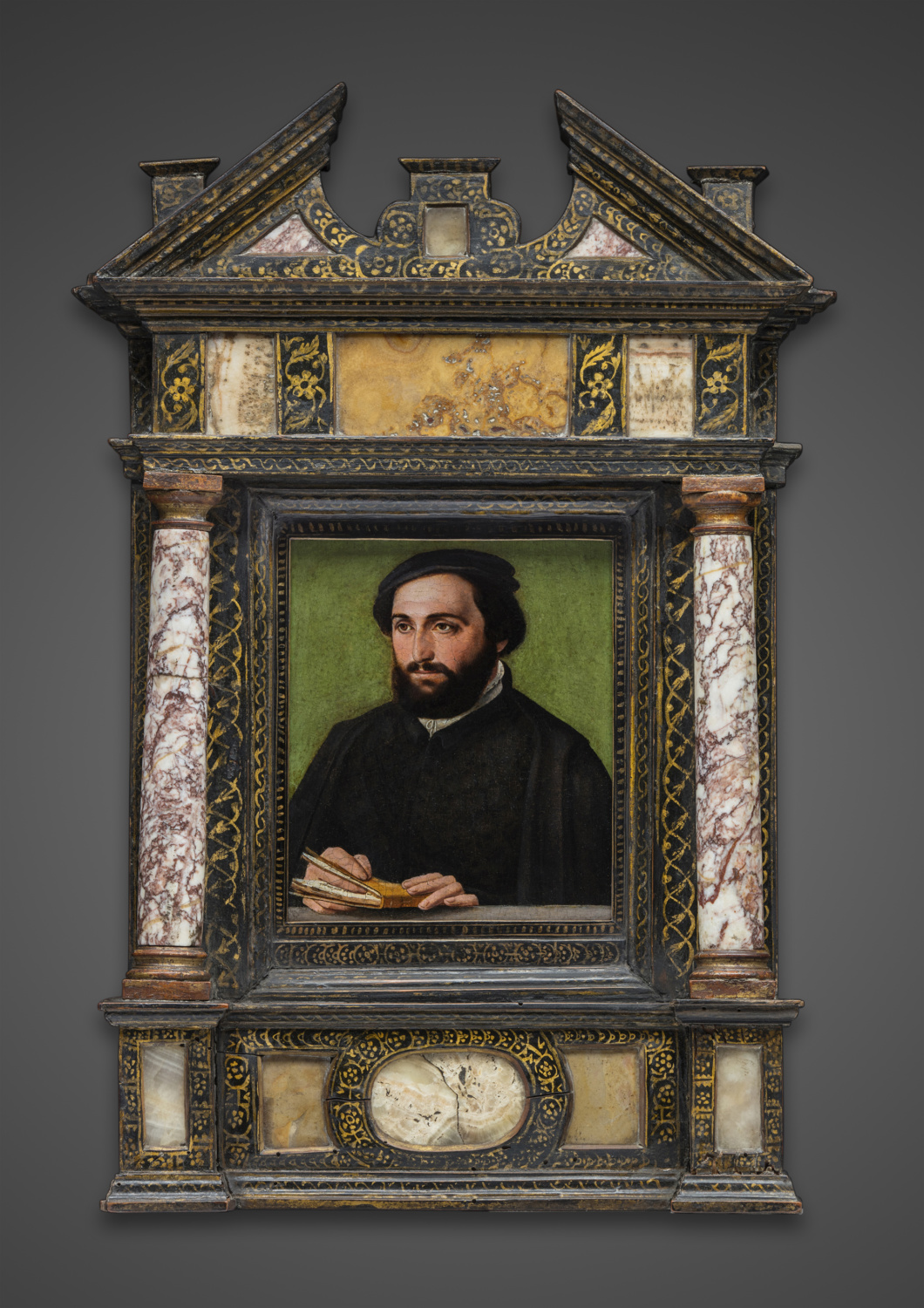Details
Oil on oak panel
On the reverse, there is a fragment of an old label: Ritratto […] dipinto […] della […]
A blue wax seal bearing the Habsburg eagle and the letters FI, with the following annotation around the periphery: “C.R. ACCADEMIA DI MILANO / PER L’ESPORTAZIONE”
Square red wax seal bearing a parti coat of arms: on the left, BLAYDS, d’azur à une fasce d’hermine avec une épée érigée en dessous, en chef argent au pal de gueules entre deux faces de léopard, le pal chargé d’une gerbe; on the right, HIND, de gueules à chevron entre trois biches d’or; the crest: un léopard rampant col et chaînes d’or, tenant une épée dans la patte droite; underneath the motto GRATO ANIMO
In a partially gilded 16th century wood and marble tabernacle frame
H. 5 1/2 in; L. 4 3/4 in
Frame: H. 15 7/8; L. 10 11/16; D. 2 1/16 in
Provenance
Private collection, Italy, late 18th century
Acquired in Italy before 1835, as indicated by the wax seal of the Milan Fine Arts Academy
Thomas Calverley Blayds (1795‑1848) and his wife Charlotte Hind, Castle Hill, Englefield Green, Surrey
His posthumous sale, March 30, 1849, lot 33 (attributed to Hans Holbein)
His son, William Calverley (1825‑1880), London
His posthumous sale, Christie’s, London, July 23, 1881, lot 300 (acquired by Wagner)
Private collection, Paris


The present portrait, as remarkably delicate as a miniature, can be compared to the work of Corneille de la Haye, known as Corneille de Lyon, due to the small size of the panel and the light green background. Several artists were working in a similar style, whether or not directly influenced by Corneille, making it difficult to settle on a firm attribution.
The man depicted is dressed entirely in black. The absence of decorative feathers, coloured fabrics or gold embroidery – sartorial adornments reserved for nobility – hints that the sitter is neither of noble descent nor a clergyman. He was probably a wealthy member of the upper middle class, either a merchant or an artisan, and appears well aware of his privileged social position, choosing to be represented holding a leather-bound book.